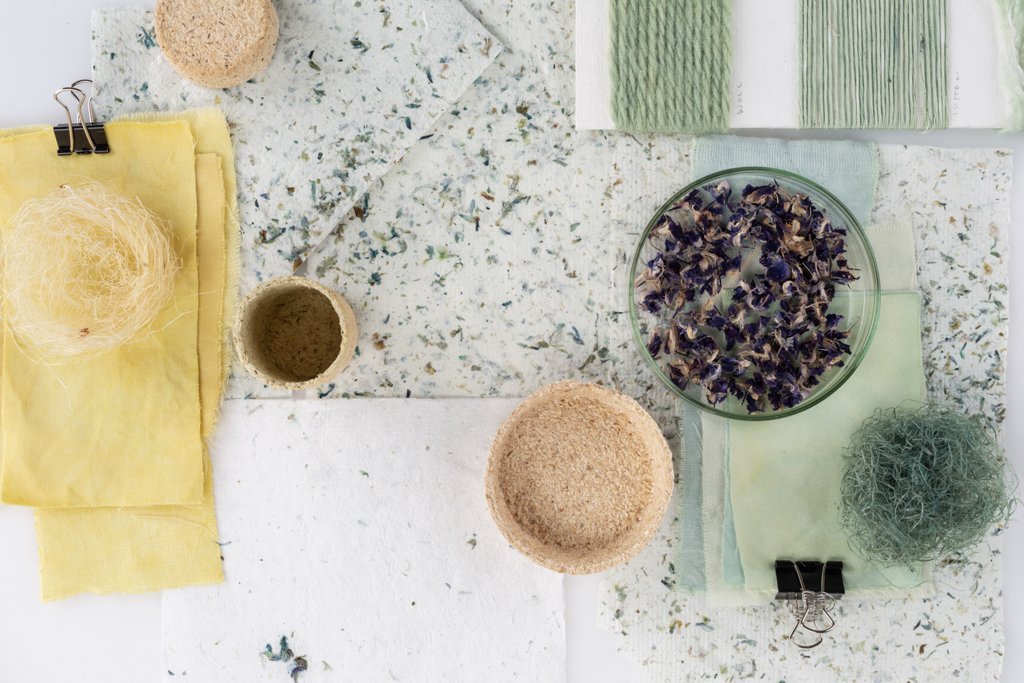Our material world is in a state of flux. As we all are aware by now, the global overconsumption of natural resources can’t continue. The ecological problems caused by material production, use, and disposal need to be solved urgently.
Digitalization and an electricity-based future require new energy systems, and more and more gadgets containing rare metals. The words including ‘bio’ are often seen as a solution for these problems. Biomaterials, bio-based materials, biodegradable materials, bioeconomy, biologically produced materials, biotechnology, biodesign, bioengineering… all these have great potential to make a change. But how to get involved, and where to start?

I say to our ChemArts students that the first steps are curiosity and understanding. The ‘bio’ words can be tricky as they often present complex concepts, and their meaning might depend on the context. For example, in medicine biomaterials refer to biocompatible materials that are used in repairs and replacement of tissues, and their origin might be synthetic such as glass or metals. In material research, biomaterials usually refer to bio-based materials from renewable material sources. Words are often used without precision: biodegradable products might not be compostable. Our life is based on biological processes, and synthetic biology is developing fast; we learn about amazing advancements in bioengineering almost every week. The expanding community of material-focused designers is also using biological processes to grow materials with fungi and microbes, with experimental DIY methods. Both approaches are valuable, but the scope, process and outcome might be very different. Misunderstandings happen easily when crossing disciplinary boundaries.
An increasing number of designers are exploring new materials and means of production to create ecologically sustainable services, processes, or products. Some of them focus on speculative or critical projects to raise awareness of unhealthy consumption habits. Some are dedicated to developing alternative materials out of biomass, or as already mentioned, growing materials. There is plenty to explore: all trees and plants contain cellulose, the most abundant organic polymer on the earth, and other interesting compounds such as lignin, bark, long bast fibres and extractives. Circular economy, a system-level framework for reuse and recycling, guides us to look at the material flows. A designer can follow its main principles: eliminate waste and pollution, circulate materials at their highest values, or find solutions to regenerate nature. Biomass waste and side streams from industry and agriculture provide interesting alternatives to virgin raw materials. Another source of inspiration is history: how did our grandmothers and -fathers and their predecessors produce their rare and precious objects, by utilising local materials.
When developing new materials, critical thinking is necessary. As there are more questions than answers currently, the temptation for greenwashing is huge. Truly sustainable use of natural resources requires clear policies, and all production chains need to be transparent. Reliable (but still interesting) communication is a must. Not all ‘bio’ or everything done in the past, is sustainable. For example, the retting of flax in the shallow lakes in Finland caused serious eutrophication, and plastic, the wonder material of 1960’s and 70’s, has caused severe environmental problems we are now trying to tackle.
No matter how virtual our life will become, it depends on materials. The journey from the first findings or even proof-of-concept to real-life material applications is long, approximately 10-15 years. Let’s do our share as human beings and as persistent design professionals to turn our material world into a more sustainable one.
